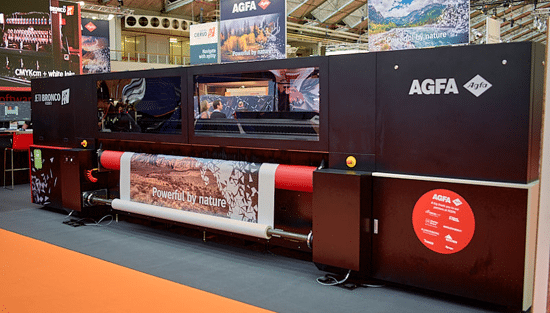Process control: are you up to date?

Paul Lindström says modernising your workflow systems will make your business more profitable and productive.
As with all other organisations using industrial production processes, graphic arts companies need to adopt modern process control techniques throughout the print production workflow. Correctly implemented process control improves output quality and turnaround times. It reduces costs, energy consumption and waste. Besides improving customer satisfaction in general, print service providers (PSPs) that have invested heavily in process control also find that it’s seen very positively by staff.
Total Quality Management
Process control is not an isolated project, but rather should be seen as something that’s completely integrated throughout all processes in the company. We often think of process control as being mainly relevant for manufacturing, where it is commonly applied. But it can and should also apply to administrative tasks, as well as to marketing and sales activities. This is because process control is about reducing waste, be it waste of time, resources or materials. This is what the expression Total Quality Management (TQM) really applies to.

Process control is part of Total Quality Management (TQM). The customer’s needs should always be in focus, along with a constant striving for continuous improvement
Many companies use flow charts to describe existing production processes, to identify where and when there should be checkpoints, where quality control takes place. The flow charts also provide a convenient way to describe visually what correct and optimised production procedures looks like, and can also be used when training new staff. You can have simplified overview flowcharts complemented with more detailed flowcharts that describe the various sub-processes in more detail.

It is usually very helpful to produce flow charts to describe the production processes, especially to identify and establish where and when quality control should take place.
Risk assessment
The ISO 9001 standard for quality management systems is probably the most well-known international standard. It is closely related to process control as well as quality management and describes the components that need to be in place in a robust quality management system.
But ISO 9001 doesn’t say anything about what hardware or software you should use, or what methods you should apply to achieve your goals. It is based on the Plan, Do, Check and Act/Adjust (PDCA) model and its central theme is that companies should work towards achieving continuous improvements.

At the heart of quality management according to the ISO 9001 standard lies the use of the Plan, Do, Check and Act (PDCA) model. Using established standards helps to ensure quality and continuous improvements.
Established best practices and routines are not fixed forever, and should be regularly assessed and reviewed, typically through internal or external audits. Internal audits are what you do using your own staff, and external audits can be done using consultants or, if you are evaluated by an accredited certifications company, independent auditors contracted to assess how well your quality management system performs.
In the latest version of the ISO 9001 standard (2015), more emphasis has been put on risk assessment. In each process step you can ask yourself what risks, or adverse effects, a failure of the quality system will have on you or your customer. For example, failing to check (measure) the print quality of a particular order that is later rejected not only causes a costly reprint, but also risks customer goodwill. Not all customers tell you when they aren’t fully satisfied: they quietly move on to another print service provider. You need to be proactive in both ensuring that you meet the customer’s needs, as well as checking customer satisfaction through surveys and regular communications.
Once you have determined what your optimised production processes look like and where the control points should be, you need to make measurements.
- Read more from Paul about process control and measurements. Or look at other ISO standards that can make a difference.
ISO 9001: seven quality management principles
- Customer focus
- Leadership
- Engagement of people
- Process approach
- Improvement
- Evidence-based decision-making
- Relationship management
Become a FESPA member to continue reading
To read more and access exclusive content on the Club FESPA portal, please contact your Local Association. If you are not a current member, please enquire here. If there is no FESPA Association in your country, you can join FESPA Direct. Once you become a FESPA member, you can gain access to the Club FESPA Portal.
Topics
Recent news

The personal touch: visit Personalisation Experience’s SmartHub Conference 2025
Join the SmartHub Conference at Personalisation Experience next month to stay ahead of the latest tech and trends.

How to build brand trust using customer reviews
Reviews can benefit or damage your business’s reputation. From spreading the word to social proof, here is why reviews matter and what you can do to manage your customer reviews to improve your brand’s reputation.

Regulation guidance: Extended Producer Responsibility
Extended Producer Responsibility (EPR) is now in effect. What does it mean for those in the print industry? Sustainability consultant Rachel England outlines everything you need to know.

How to maximise the automation of your production workflow
Workflow automation has evolved beyond basic file prep, now encompassing job submission, prepress, and postpress. Printers automate to boost productivity, cut waste, and address skill shortages. Implementing tailored automation, from RIPs to MIS, optimises throughput and profitability, minimising human intervention.